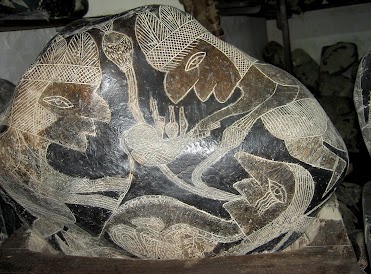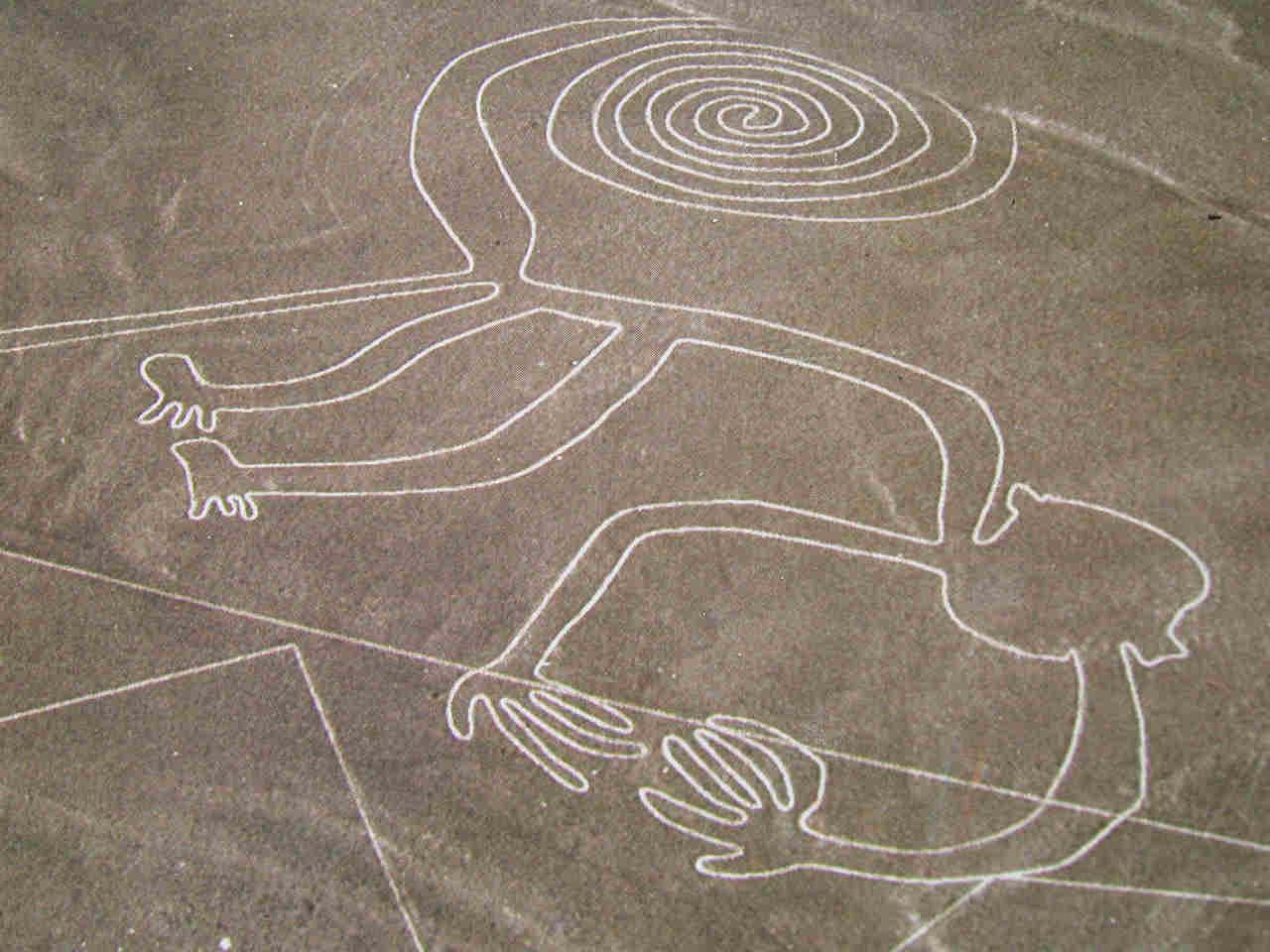The Images on the Ica Stones (Part Two)
If the enigmatic stones assembled by Dr. Javier Cabrera in Ica were limited simply to dramatic images of dinosaurs, they might be easy enough to dismiss. But among the more than 11,000 stones that can be viewed in his museum are others that speak to an age of technology that rivals the marvels of our own time.
In the image shown here a man can be seen studying the heavens with a telescope. Other astronomical objects are included, including a large comet that dominates the sky. Could this have been a reference to the agent of catastrophe that destroyed their world?
 In the image on the left, two people are depicted operating on a patient, with the heart having been removed from the body. This is just one of an entire series of stones which appear to show a complete heart transplant operation.
In the image on the left, two people are depicted operating on a patient, with the heart having been removed from the body. This is just one of an entire series of stones which appear to show a complete heart transplant operation.
Another in a series of stones devoted to surgical procedures shows a surgeon about to perform a caesarian section on a pregnant woman.
Another vivid stone etching appears to illustrate the continents of earth as they appear from space. None of the continents look exactly as they do today, but this scene might represent the earth as it looked in the distant past before some giant cosmic catastrophe.
http://www.viewzone.com/ica2.jpg
The images shown below are particularly interesting because they match not only the content, but the exact style of images which appear in the famous “lines” of Nazca, llocated just a few miles away from Ica.
What is significant is that the lines etched in the desert sands surrounding the town of Nazca can only be seen in their entirety from the air, and were in fact unknown to the world until they were first noticed by the Peruvian Airforce in 1956.
This suggests that the carvers of the images on the stones were the same people who etched these huge designs on the desert sand. Some of the most recognizable images of Nazca are the pictures of the “monkey”, the “tarantula” and the “humming bird”, as shown below:


Nazca image of a bird

Similar designs to the images carved into the desert have been found on the stones of Ica, as evidenced by the example above.
Whether the stones shown above are the work of the survivors of a lost civilization is unknown. What is known is that they were found in an area that contains many unsolved mysteries indicative of a highly advanced society that might once have existed in the area.
The stones of Ica have been found close to the “lines” of Nazca which portray images that were designed to be seen from the sky. They were found in an area close to the megalithic ruins of Sacsayhuaman and Ollantaytambo. They were found in the same region as the underground tunnels discovered in Ecuador and Peru.
The problem with these enigmatic stones is that they do not fit with the accepted version of the history of humanity on this planet.
It is left to the reader to decide whether our present knowledge of history is true, or whether other civilizations may once have flourished on the earth, only to vanish without trace as a result of cataclysms in the past.





